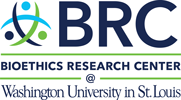Title: Political Points
Author: Brian Schrag, ed., 2006, Research Ethics: Cases and Commentaries, Volume 3, Bloomington, Indiana: Association for Practical and Professional Ethics (originally appeared on www.emhr.net)
Description: A researcher is unsure how to disseminate potentially controversial findings regarding needle exchange programs and HIV infection rates.
Keyword(s): Other Study Design or Risk/Benefit Issues, Mental Health Disorders, The Scientist as a Responsible Member of Society, Study Design and Risk-Benefit Analysis
Case: Dr. Lang, a public health epidemiologist, is interested in the use of sterile needle exchange programs (NEPs) to reduce the rates of HIV in injection drug users. She designed a study that provided data about the seroprevalence of HIV among injection drug users in Capital City (a city not studied previously) and tracked seroprevalence over time in a population that used NEPs and a group that did not. The study design did not allow Dr. Lang to assign subjects randomly to the groups of NEP participants or nonparticipants. She recruited the NEP participants at the exchange. To recruit the nonparticipants, she placed an ad in the local paper and hung fliers in community centers, shooting galleries and free health clinics throughout the city. She collected demographic and HIV risk behavior data through a written survey and administered HIV tests to obtain seroprevalence data at the beginning and end of the study period.
Upon completion of the study, she finds surprising results: NEP participants showed higher HIV infection rates over the study period than nonparticipants. This finding contradicts all the research she has read on the subject, which indicates in controlled studies and across cities that needle exchange programs significantly reduce rates of HIV infection among injection drug users, without increasing drug use.
On analyzing her results, Dr. Lang observes that they may have been biased by the fact that the NEPs she studies were located in inner-city neighborhoods, serving a population at higher risk of infection. Those who do not accept the needles at the exchange tended not to need them because they could afford to buy them on the black market or travel across state lines to buy them in drugstores. Moreover, she found that nonparticipants were less likely to participate in the riskiest activities. She included these observations and explanations in her draft paper.
While Dr. Lang is confident that her colleagues will understand (although not necessarily agree with) her interpretation of results, she also knows that needle exchange is a hotly debated political issue that has recently been taken up by people she considers to be religious extremists. She fears that they could misrepresent her results as support for their political goals, ensuring that the government refuse to approve NEPs and shutting down existing programs, including the one where she does her research. She is afraid to circulate her draft paper to colleagues for comments because she knows that even an unpublished study could be cited by activists or discussed in the media.
Although she is not directly involved in the NEP, she knows the activists well because of her research with them, and because she was present at the site on many occasions to gather data and interact with the study participants. The exchange is in a precarious position due to the state’s drug paraphernalia laws, and the fact that research is done on site has helped the activists achieve policy of tolerance from local law enforcement. She fears that misrepresentation of her research may lead to the closing of many NEPs and more new, preventable cases of HIV in those areas.
She also fears that if her findings are cited by lobbyists against needle exchange, her reputation may be tarnished both among her colleagues in the public health field who may not take time to read her article and among the activists, study participants and clients of the needle exchange. On the other hand, she has spent three years designing and conducting this study, and if she doesn’t publish soon, she will have nothing to show for years of hard work and thousands of funding dollars.
-
-
- How should Dr. Lang disseminate her results?
-
Questions for Further Reflection
-
-
- Who has an interest in Dr. Lang’s research (including Lang herself)?
- What are her obligations to each interested group?
- How should these obligations affect her decision to publish?
- What are researchers’ responsibilities in experimental design and implementation of research on politically charged issues?
- What are their responsibilities in presenting their results to the scientific community and to the public at large?
- What is the appropriate course of action when a researcher discovers a flaw in her experimental design?
- What are the responsibilities of the media and politicians in distributing and interpreting the results of such a study?
- Should Dr. Lang publish her study? Why or why not?
-

